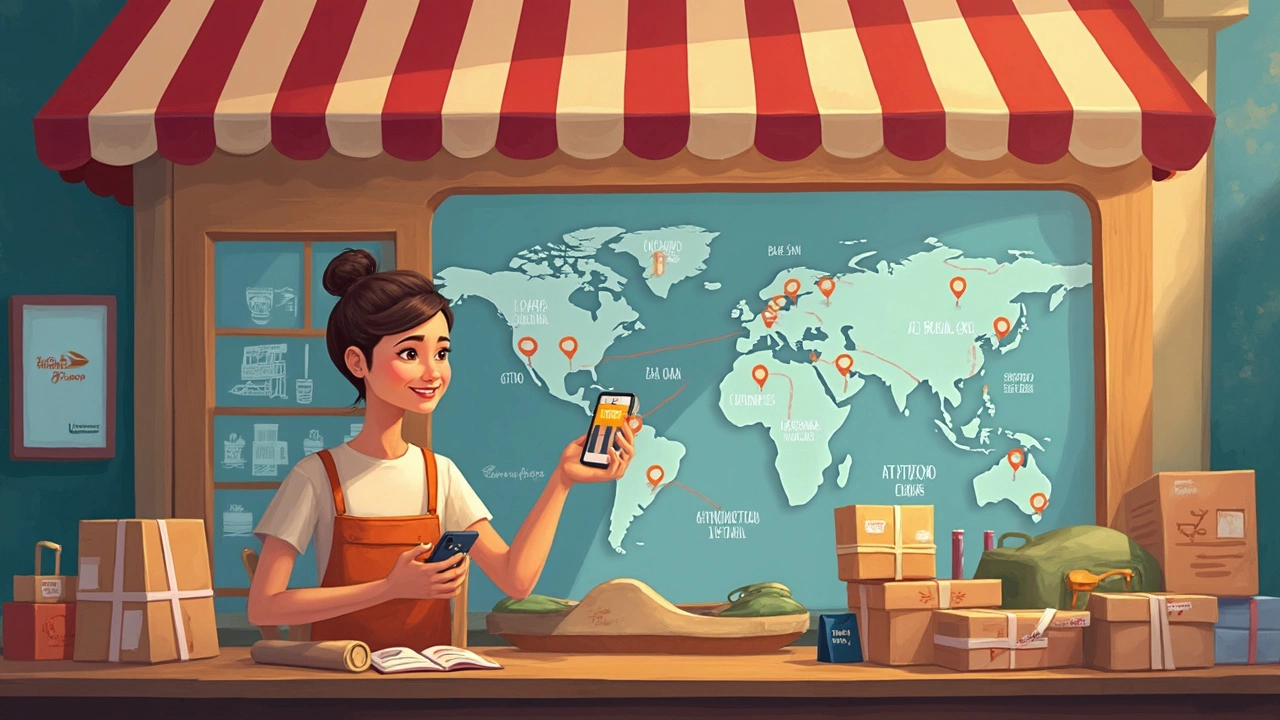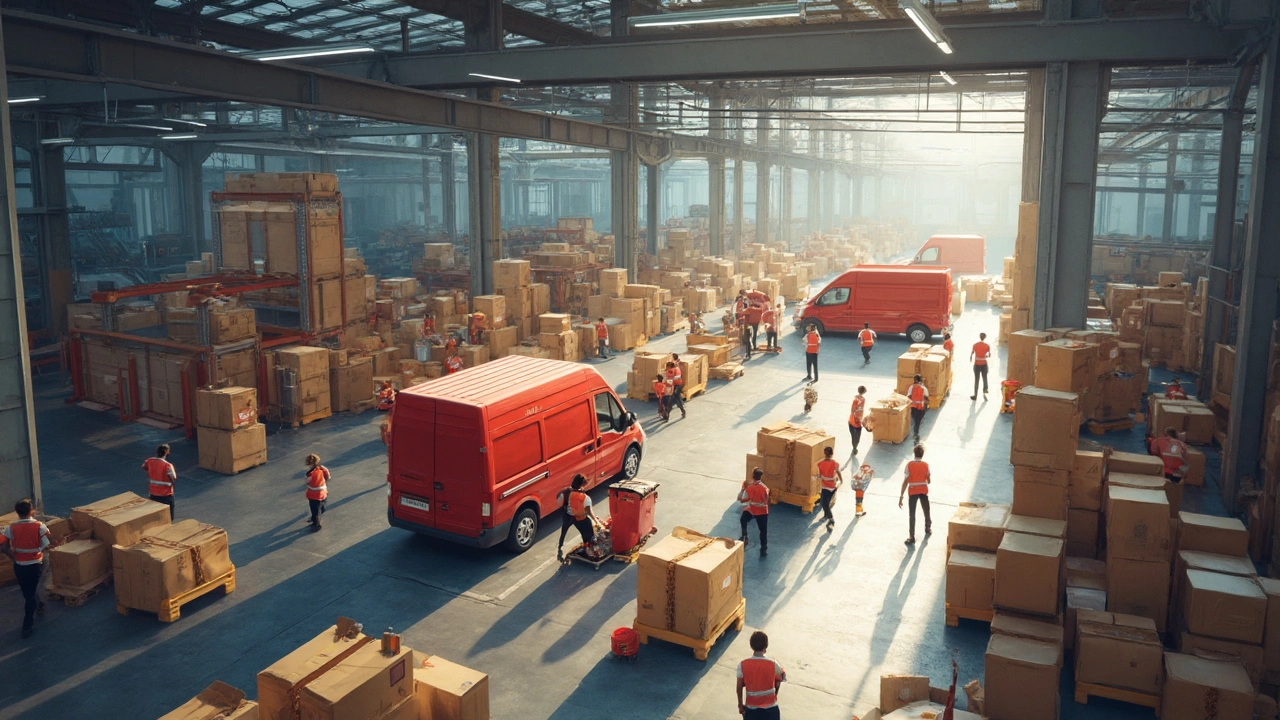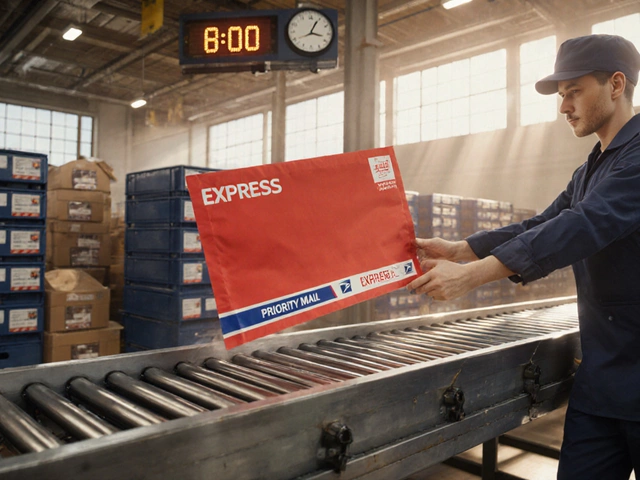Ever wonder why stuff you order online shows up at your door faster than takeout? That's all about e-commerce logistics. Behind every simple click-to-buy, there’s a network making sure your package leaves a warehouse and lands on your porch in record time. It’s not magic—it’s a new way of managing the whole supply chain, from stock rooms to shipping trucks.
But it's not only about speed. E-commerce lets sellers track their products every step of the way, which means fewer nasty surprises like sold-out items or lost packages. You don’t have to be a giant company to offer two-day shipping or real-time tracking anymore. These advantages make the whole shopping experience a lot less stressful, both for buyers and business owners.
If you’ve ever needed to return something your kid, like Tobias, accidentally ordered, you’ll appreciate how much easier returns have gotten. Retailers now handle returns through the same slick systems that make shipping so quick, making refunds and exchanges faster than ever. And what about small shops or new brands? With the right logistics partners, even a tiny online store can reach customers halfway around the world.
- Faster and Smarter Shipping
- Inventory Management Gets an Upgrade
- Return Policies That Actually Work
- Going Global Without Big Business Budgets
Faster and Smarter Shipping
When it comes to e-commerce advantages, nothing stands out more than how quick and streamlined shipping has become. Just a few years ago, waiting weeks for an online order was pretty normal. Now, same-day or next-day delivery is what shoppers expect, especially in bigger cities. Big online stores like Amazon have pushed this to the next level with their Prime service, but smaller brands are catching up thanks to smarter logistics platforms and better courier partnerships.
How do they pull this off? It’s not just about piling boxes on faster trucks. E-commerce logistics use special hubs and fulfillment centers that are much closer to customers. Warehouses aren’t just storage—they pack, label, and ship orders pretty much as soon as you click “buy.” Plus, companies use software to map out the fastest routes, so drivers avoid traffic jams and delays.
Not convinced? Here’s an example: Some big retailers break the country into zones and keep best-selling products stored in local hubs. That way, your headphones or spices are already nearby when you buy them. This means less waiting and lower shipping costs. And it isn’t just for the big players. There are now “third-party logistics” (3PL) services that handle everything for small businesses, so even a side hustle can offer quick shipping.
Check out these real-world stats for the US in 2024:
| Shipping Speed | % of E-commerce Orders |
|---|---|
| Same-day | 18% |
| Next-day | 42% |
| Standard (2-4 days) | 35% |
| 5+ days | 5% |
There’s no one-size-fits-all, but almost half of online orders now arrive the next day or sooner. So, if your business isn’t keeping up with fast shipping, you risk losing out—it’s just what people expect now.
On top of speed, better shipping means better tracking. Modern systems let you—and your customers—see exactly where the order is, often in real time. That means fewer headaches about lost packages.
- If you run an e-commerce business, look for shipping software that connects with your online store and picks the fastest, cheapest delivery option every time.
- If you mostly shop online, sign up for delivery alerts and tracking so you know exactly when to expect your order.
Inventory Management Gets an Upgrade
Old-school inventory used to mean counting boxes in a back room, jotting things down on notepads, and crossing your fingers that stuff wouldn’t run out. Now, e-commerce advantages let shops big and small use real-time inventory tools. These systems give live updates, so sellers know exactly how much stock they have—down to the last action figure.
One key perk? No more "sold out" shocks for shoppers. The moment someone clicks 'buy', systems automatically subtract that item from the store’s count, helping avoid double-selling or accidental overselling. For folks running an online shop, this means less headache and happier customers who actually get what they ordered.
Another game-changer in online shopping is predictive restocking. Many platforms now track sales trends and nudge business owners when it’s time to reorder, sometimes even before they notice a low stock on bestsellers. That means fewer missed sales and a lot less manual tracking for the owner.
If you’re curious about how accurate inventory impacts business, here’s how efficient systems compare:
| Inventory Method | Out-of-Stock Rate | Manual Errors |
|---|---|---|
| Old-School Manual | ~8% | High |
| Modern E-Commerce System | <2% | Low |
Efficient inventory also means smoother logistics in the warehouse. A good system tells staff where to find every item, cutting down the time it takes to pack and ship—so nobody’s scrambling to hunt through piles of boxes. If you ever thought online stores just throw stuff on shelves, you’d be way off! Many are running tight, almost military-level operations behind those checkout buttons.
Best part? Small shops can use these same tools that big brands rely on. It’s totally possible to manage inventory from your smartphone, whether you’re tracking a dozen products or thousands. That’s a superpower worth having if you want to keep up with busy online shoppers.

Return Policies That Actually Work
Remember when returning something meant standing in line forever and filling out weird forms? In the world of e-commerce, things are way smoother. Brands know shoppers won’t hit “buy” unless they trust the return process. That’s why clear, hassle-free policies have become a big deal—not just a nice perk.
Amazon set the tone, making free and easy returns almost expected. Now, most stores let you print a prepaid label, toss the item back in the box (sometimes even the packaging it arrived in!), and schedule a pickup or drop it at a local partner. Some brands even offer paperless QR codes, so you don’t have to deal with a printer at all. For real, my son Tobias once sent back a shirt he outgrew by scanning a code at a local pharmacy—no box, no tape, just handed it over.
Simple returns aren’t just about customer smiles—they save businesses money on support calls and help keep loyal shoppers coming back. Many retailers use smart logistics partners who handle returns just as fast as deliveries. The tech tracks every step, so you get refunded as soon as the return is scanned in. That's a huge win for customer peace of mind.
Here's what makes a return policy really work in online shopping:
- Easy-to-find return instructions, right on the product page
- Free return shipping (or, at minimum, clear info about any fees)
- Quick refunds, often within 48 hours of the return being processed
- Return labels or QR codes provided instantly via email
- Options for box-free or drop-off at local partner locations
In fact, return rates for fashion and shoes bought online can hit 30%—a number most stores never saw in the old retail days. To handle all those returns and still keep customers happy, e-commerce logistics have become seriously advanced. This is a big reason shoppers are willing to take a chance on brands they’ve never tried before—they know sending something back won’t be a headache.
| Industry | Average Online Return Rate |
|---|---|
| Apparel | 25-35% |
| Electronics | 8-12% |
| Home Goods | 5-8% |
When stores invest in smarter return options, customers stick around longer, and everyone wins. Simple as that.
Going Global Without Big Business Budgets
It used to be only mega-brands could afford to ship stuff to a customer in another country. Now, thanks to e-commerce logistics, your small business—or even your basement side hustle—can sell worldwide. Platforms like Shopify, Etsy, and eBay have made reaching global buyers as easy as uploading a product photo. Global shipping networks and third-party logistics companies (3PLs) handle all the tricky cross-border delivery stuff for you.
If you’re worried about super expensive shipping costs, there’s good news: many 3PL companies offer collective rates. Small stores can ship with the same companies the big chains use, so you don’t get hit with crazy high postage. Even better, businesses can use local warehousing solutions. Brands store products in different countries ahead of time, so when someone in Germany or Canada clicks "Buy," the order ships from the closest warehouse, not across the whole planet. This means faster shipping and happy reviews.
- Localized websites: E-commerce platforms now offer auto-translation and currency conversion, so your products actually make sense to international visitors.
- Customs automation: Modern systems fill out all those annoying customs forms automatically, making sure parcels clear borders quicker.
- Clear return policies: Good e-commerce sites show return instructions in the buyer’s language, making customers more likely to trust and order from new shops.
A recent survey from Statista showed that in 2024, roughly 23% of all retail sales worldwide happened online—and about 30% of those online sales were cross-border orders. That’s a huge jump from even five years ago when many small brands skipped global selling because it was just too hard or expensive.
If you’re starting out, it’s smart to partner with a 3PL or use platforms that provide global logistics support. They guide you on packaging rules, banned items, and the best ways to avoid customs slowdowns. You don’t need a giant warehouse or loads of cash, just the right tools and partners to tap into the global e-commerce market. The world is open for business—even if your store is run from your kitchen table.





